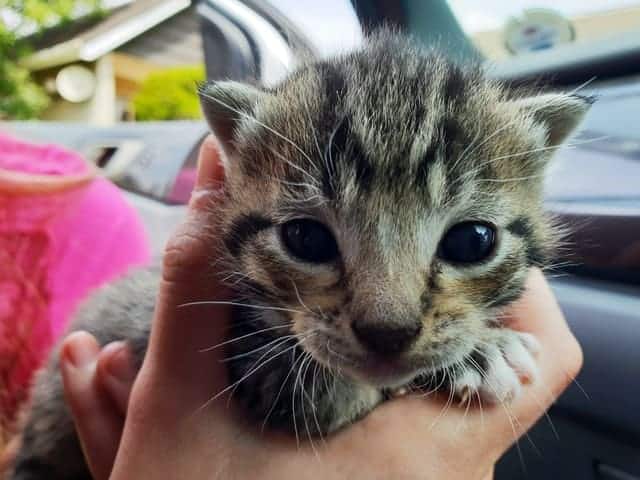
If our pet is sick, we too are sick. What is mannosidosis in cats and what risks could it pose to my kitty?
There are some diseases that, just by saying the name, freezes our blood. And when they hit our animals, the symptom of impotence increases even more. What is mannosidosis in cats and what risks could there be for my kitty?
Mannosidosis in cats
You don’t hear about it often, but this is an insidious disease that could have unknown outcomes.
Studies have shown that some cats suffer from a concomitance of diseases : they affect multiple areas of the body, forcing the animal even to be disabled.
But what is mannosidosis in cats? Yes it is seen to be a disease that only complicates certain cat breeds.
Kittens ranging from 2 months up to 7 months of age are affected : sometimes, unfortunately, they can also be born lifeless.
The cause is to be found in the lack of the alpha mannosidase enzyme : its role is fundamental at the cellular level.
In fact, alpha mannosidase is an enzyme responsible for degrading sugars rich in mannose into glycoproteins, molecules formed by proteins and sugars.
When it does not work or is deficient in the cat, it would create an accumulation of sugars first in the cells and subsequently in the tissues.
All this translates into a serious decompensation for the organism and the cat would have:
- Bone and joint malformations;
- Intellectual problems;
- Repeated infections;
- Problems with the hearing system;
- Problems with the visual system: cataracts are frequent;
- Growth deficit.
All of this would manifest itself in newborn puppies with:
- Tremors
- Lack of balance
- Lack of coordination in movements.
Mannosidosis in cats is a genetic accumulation disease : it is degenerative and, while in humans it has found enzyme replacement therapy, in animals it still does not.
This disease is among the causes of cerebellar syndrome in cats and, if the animal survives, the cure would be of the symptoms and not of the cause.
Cerebellar syndrome in cats
Some pathology occur in the form of multiple problems that affect not just one area of the body but several.
In these cases we speak of “syndrome” and not simply of “disease” : in the cerebellar syndrome in cats the symptoms involve not only the functionality of the cerebellum but also the general state of health.
In practice, a part of the brain, the cerebellum, is not well developed and symptoms such as:
- Inability to coordinate movements : The cat intends, for example, to lift a paw but fails to do so; or the movements he makes are not precise, there is no communication between the order emanating from the brain and its execution by the body.
- Problems in the act of feeding : the head is shaking, the cat cannot control the movement of bending over to eat in the bowl; it follows that the animal gets nervous and no longer eats.
- Depression : the inability to carry out certain movements and mental retardation, with consequent deficiency of serotonin and dopamine, lead the cat to an apathetic state with no apparent way out.
- Hypermetry : voluntary movements are exaggerated; for example the cat wants to move forward but takes the step too long and falls.
The diagnosis is not simple, cerebellar syndrome affects kittens but it is not certain that all those of the same litter will be affected.
It is a degenerative disease of a congenital nature: in some breeds of cats it can appear even after two months of life.
There could be many causes of cerebellar syndrome, including those of an infectious nature:
- Peritonitis: the infection can degenerate into meningitis;
- Toxoplasmosis;
- Cryptococcosis.
Trauma, malformations and degenerative storage diseases such as mannosidosis or sphingomyelinosis can also cause a cerebellar syndrome in cats.
The clinical picture could widen: the only therapy is to go and treat the certain causes or, alternatively, the symptoms in order to always improve the well-being of the animal.
Recommendations

If kittens are born with the problems described above, the only solution is to rely on the hands of an excellent veterinarian.
It will not be easy to follow our Cat in the movements of daily life: we must be aware that we will have to be very present in his life.
When we should see that the cat gets nervous and goes under stress because he cannot eat, it is good to try to help him calmly and a lot of patience.
In order to avoid that he does not want to eat anymore, it would be better that at least at the beginning we help him by feeding him ourselves.
Without a doubt, it is necessary to observe all his behavior and any worsening: if we see that the cat’s head is shaking more than usual or that it sleeps too much, for example, it is good to contact the veterinarian.
These diseases are subtle, they advance quietly, causing irreversible damage : it is necessary to stop immediately any new symptoms that may arise.
It would be useless to bathe the cat if we know that it is sick: we can take care of its hygiene differently, with a dry shampoo or similar products.
The vet will certainly recommend that you not only ensure that the cat feeds, but that he takes the therapy he has prescribed correctly.
These are moments in which we feel a lot of responsibility, but we know well that our kitten depends exclusively on us.
The problems could get worse because the animal’s body may not tolerate the many drugs: liver steatosis could arise in the cat or kidney problems.
Sometimes it may be necessary to have to feed cat with a syringe: it may not be able to chew and therefore to swallow solid food.
Obviously, if the cat does not eat or drink, we should immediately take him to the vet: hospitalization will almost certainly be required.






